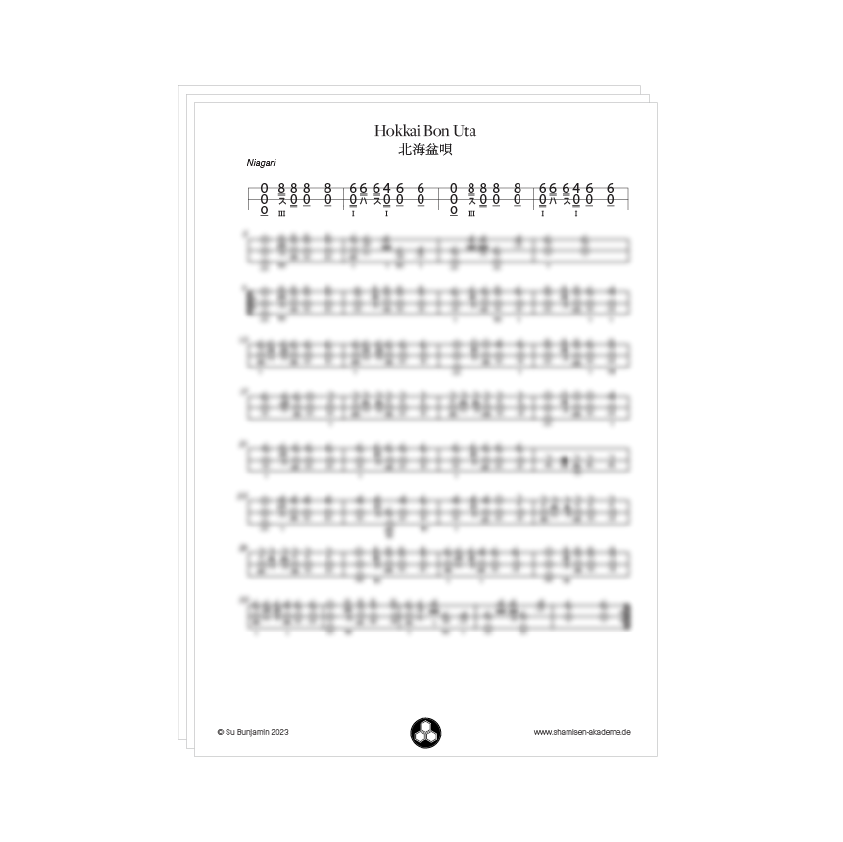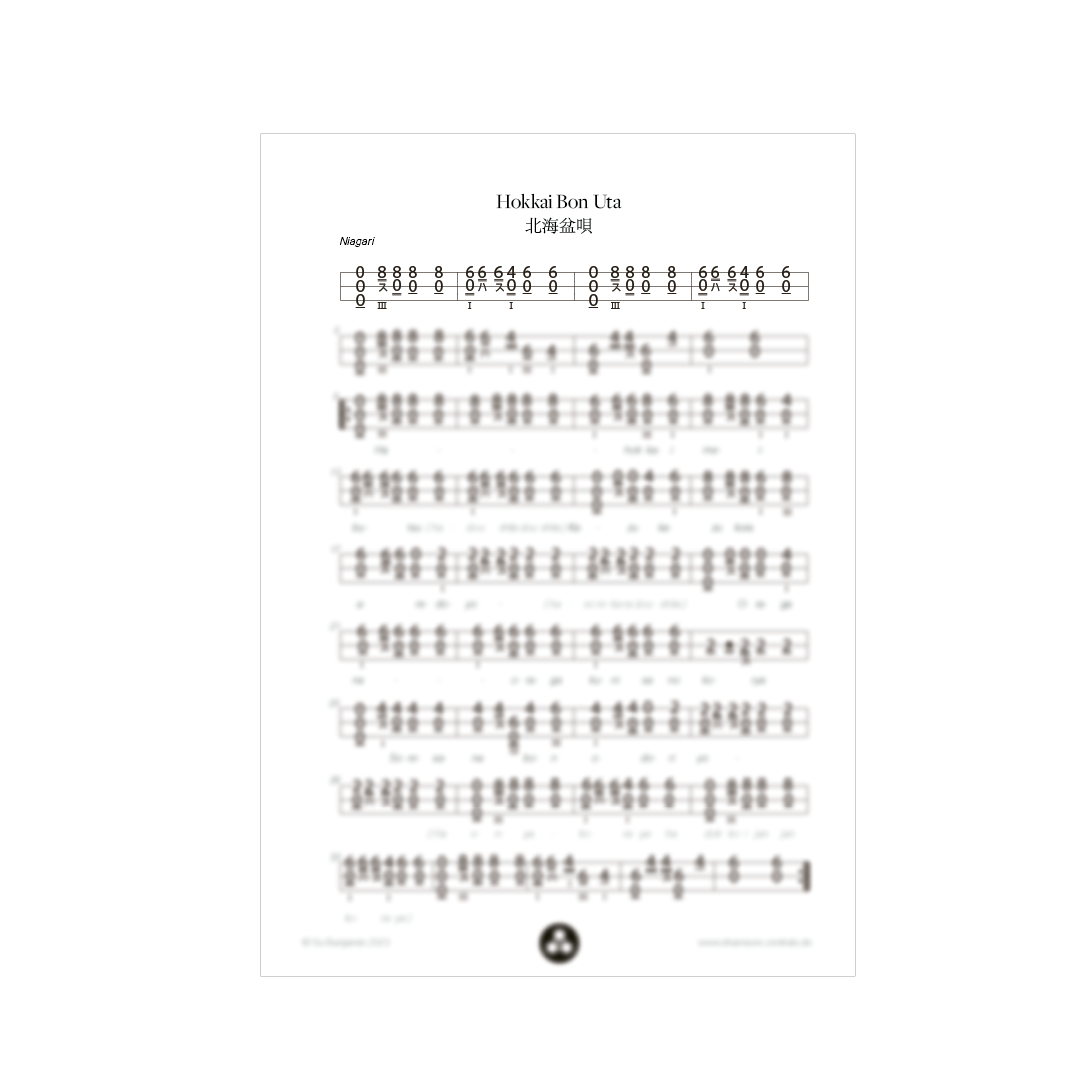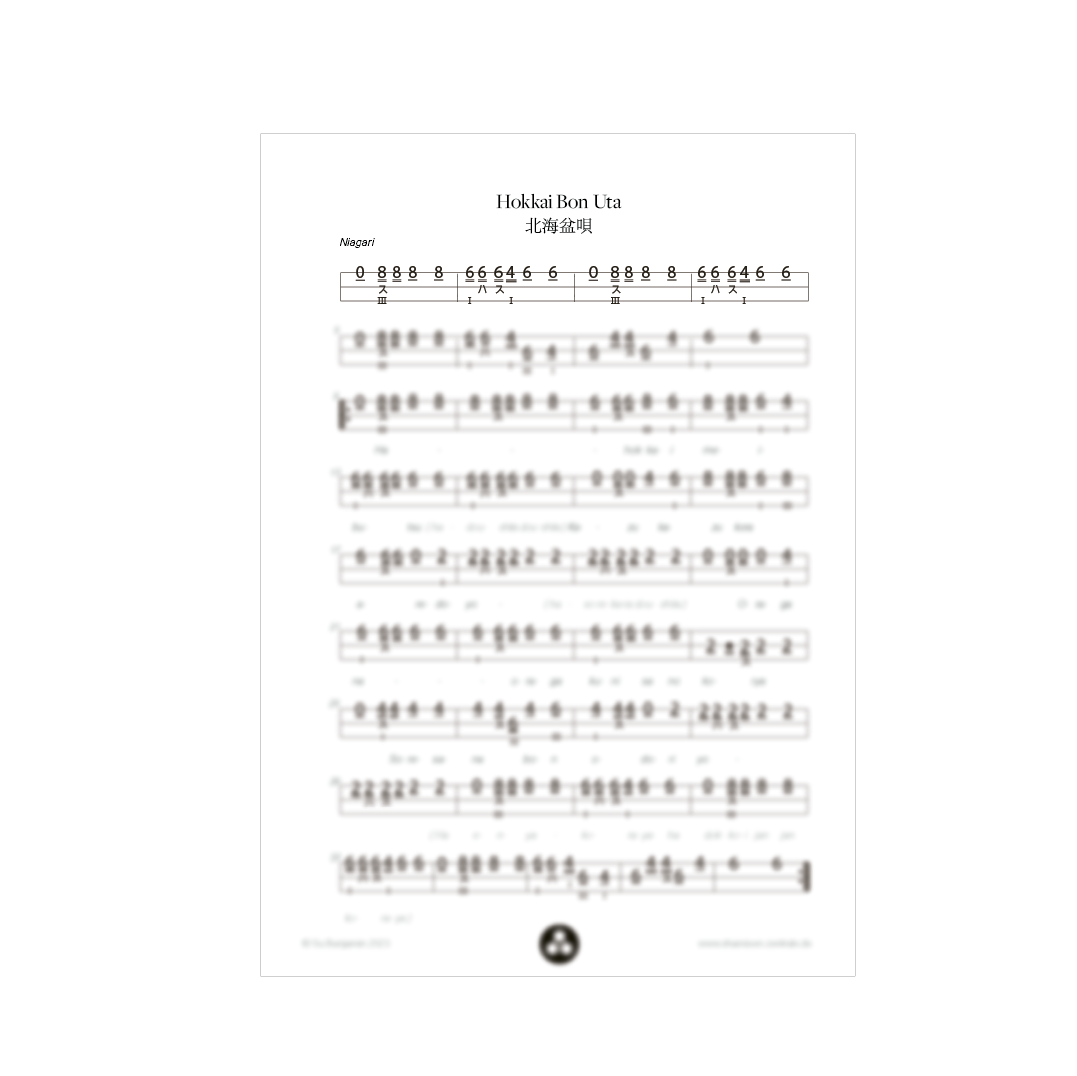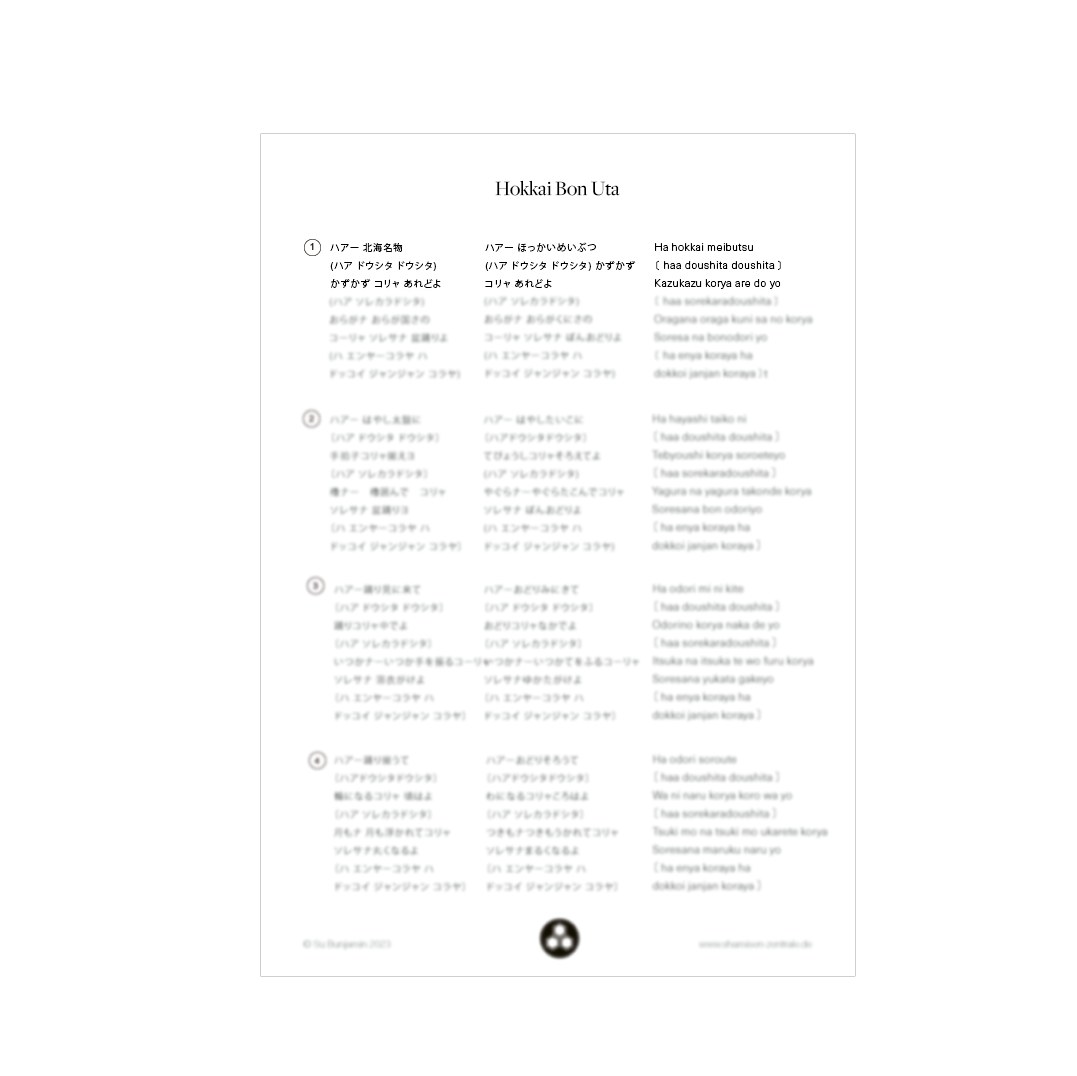Hokkai Bon Uta Bundle
This is what you’ll get:
- 3 pdfs: tabulature notation in three versions (with and without lyrics, simplified)
- 2 mp3 files: mp3 play along files in two speed versions
Song specifications:
- beginner level
- niagari tuning
2,95 €
Details
Get the notation for Hokkai Bon Uta plus super useful play along files to help you learn and practice the song!
The notation comes in three different versions: the full version with lyrics, the full version without lyrics, and a simplified version with just the melody line and without the strumming open strings. It’s a really nice bundle to build your skills bit by bit!
The mp3 play along files come in two different speed versions: 95 bpm and 135 bpm.
You can download the files from your customer account page after the purchase – a link will be provided in the order confirmation e-mail.
Wanna have a short listen to see if you like the tune? Here’s the beginning of Hokkai Bon Uta:
About the song:
Hokkai Bon Uta is the most popular traditional Japanese dance song from Hokkaido Prefecture. It’s pretty easy to play and thus a great choice for beginners. As every folk song, it comes in countless variations. This version is written out for shamisen in bunkafu (tabulature) notation. I ended up making three versions of the notation to help you gradually level-up your shamisen game within the same song. The final goal is the complete version with lyrics where you either sing along while playing (super hard!) or at least try to throw in the kakegoe calls (send me an e-mail if you don’t know what that means and want to know more). The rhythm is very steady throughout the song, so you can warm up with just gently strumming the rhythm on open strings. There’s a recurring and very steady pattern for sukui (upstroke) and hajiki (pull-off), so it’s great song material to practice those.
Tuning: Niagari
- Techniques: sukui, hajiki, strums
Tuning:
In every tuning, the strings are tuned in a certain relation to each other. For folk songs, there’s no fixed rigid tuning to a definite pitch (in contrast, the A-string on the violin is always tuned to 440 or 442hz) but what’s most important is how the strings are tuned in relation to each other.
A good rule of thumb is to tune your instrument over the base of C. This means, the big string will be tuned to C and the other strings according to the tuning of the song:
Honchōshi: C-F-C
Niagari: C-G-C
Sansagari: C-F-Bb
Access to the pdf and mp3:
Please note that this item is downloadable once only – just as receiving a physical copy of the scores would be. Consider it a “direct delivery” 🙂
After the purchase, you can download the file from your account page under “downloads” or via the link in your order confirmation email.
Make sure you save your file in an easy to locate directory. Please don’t hesitate to contact us via email if you need further assistance.



